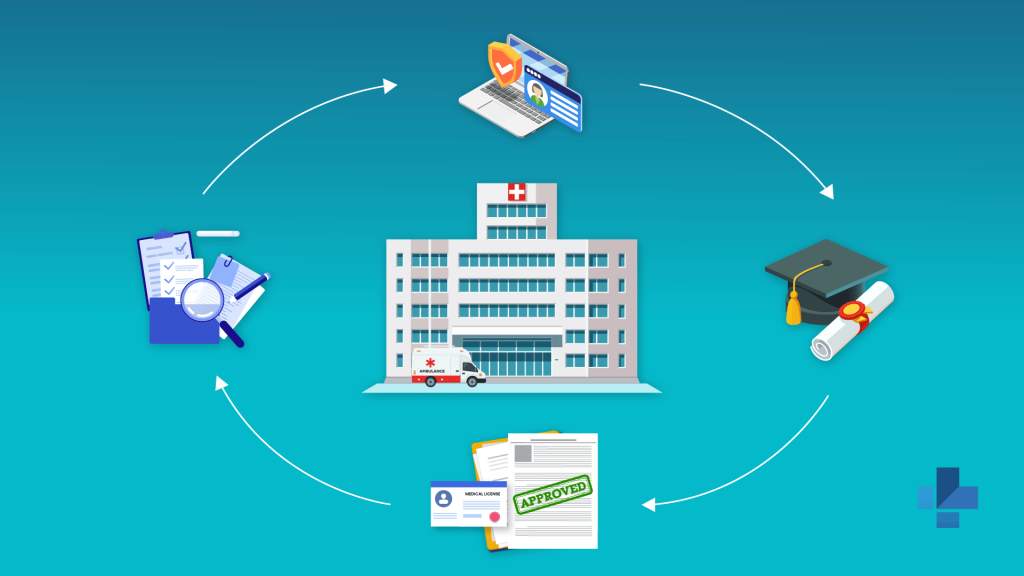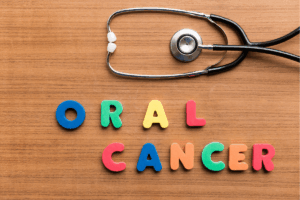
Medical malpractice affects patient safety, hospital reputation, and financial stability, making it challenging for healthcare organizations. For practitioners and institutions alike, even one claim can have long-term repercussions and significant legal expenses.
Managing malpractice risk proactively is crucial, and an important tactic to reduce exposure is credentialing. Hospitals can avoid mistakes, guarantee compliance, and bolster their legal defense in the event of a claim by confirming the credentials and work history of healthcare providers.
Our area of expertise at medtigo assists healthcare facilities in putting strong credentialing procedures in place that enhance malpractice risk management. Find out more about How Licensing Relies on Credentialing and Primary Source Verification
What is Credentialing?
Credentialing is the formal process of verifying a healthcare professional’s qualifications and ensuring that they meet the standards required to provide safe and effective care, which includes:
- Education and training verification
- Licensure and certifications confirmation
- Malpractice history review
- Screening for any sanctions or disciplinary actions
Importantly, credentialing is not a one-time event, but it is a continuous process. Ongoing monitoring ensures that providers maintain compliance with regulatory requirements and hospital policies over time.
For a broader understanding, explore how professional credentialing services streamline your medical practice setup here.
Link Between Credentialing and Malpractice Risk
A thorough credentialing process directly lowers the risk of legal liabilities and malpractice claims. By ensuring only qualified, vetted professionals deliver care, hospitals minimize risks related to medical errors and negligence.
As an illustration, hospitals that neglect or expedite credentialing have been sued in cases where careless credentialing caused patient harm, causing serious financial and reputational harm. These results can be avoided with thorough and regular verification.
Why Malpractice Insurers Focus on Credentialing
When underwriting policies and setting premiums, insurance companies closely consider credentialing.
Strong internal controls are demonstrated by robust credentialing, which also lowers potential liability.
Improved underwriting terms and reduced malpractice insurance premiums are frequent advantages for hospitals with the right credentials.
In addition to protecting patients, effective credentialing helps healthcare organizations maintain their financial stability.
Best Practices for Credentialing to Manage Risk
To maximize the risk-reduction benefits of credentialing, hospitals should follow these best practices:
- Primary Source Verification: Confirm all credentials directly from issuing authorities.
- Continuous Monitoring: Track license expirations, sanctions, and malpractice claims in real time.
- Comprehensive Documentation: Maintain accurate records for legal protection and regulatory compliance.
- Alignment with Risk Management: Integrate credentialing into broader quality assurance and risk management frameworks.
For a deeper look into primary source verification, revisit our discussion on how licensing relies on credentialing.
How Medtigo Supports Hospitals with Credentialing and Risk Management
medtigo offers digital, policy-driven credentialing solutions designed for hospitals:
- Reduces administrative burden with automated tracking and monitoring
- Enhances legal defense readiness with comprehensive documentation
- Ensures timely compliance updates to minimize malpractice risk
Our services are tailored to help hospitals implement efficient workflows while strengthening patient safety and regulatory compliance.
Contact: For support or inquiries, reach out at support@medtigo.com
Conclusion
In order to help healthcare organizations avoid mistakes, lower their legal risk, and stay in compliance, credentialing is a crucial component of malpractice risk management. By investing in professional credentialing services like medtigo, hospitals can promote safer patient care while gaining peace of mind.
Frequently Asked Questions (FAQs)
- How does credentialing help reduce medical malpractice risk?
Credentialing ensures that all healthcare providers are qualified and compliant, preventing errors that could lead to claims. - What happens if a hospital fails in proper credentialing?
Negligent credentialing can lead to patient harm, lawsuits, financial penalties, and reputational damage. - What is primary source verification in credentialing?
It is the direct confirmation of credentials (licenses, certifications, education) from the original issuing authority. - How often should credentialing be updated?
Credentialing should be continuous, with regular updates on licenses, certifications, and disciplinary actions. - Can medtigo help with hospital credentialing compliance?
Medtigo provides expert credentialing services tailored for hospitals to streamline workflows and ensure compliance. Contact support@medtigo.com for details.
















One Response